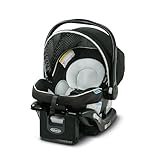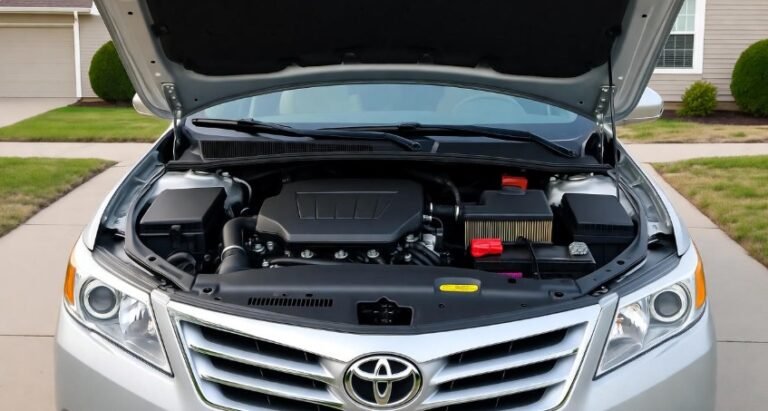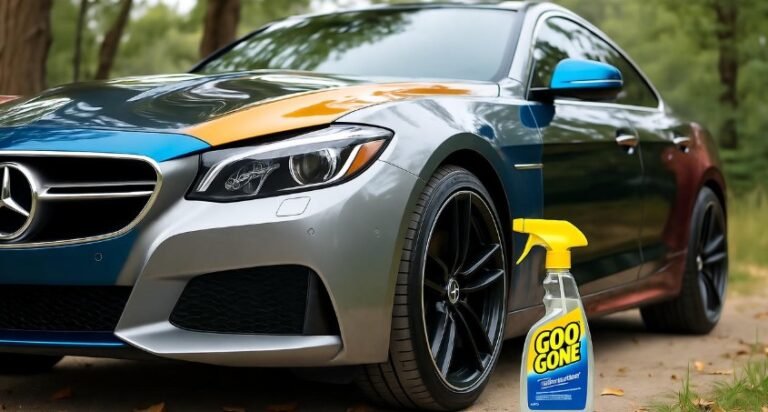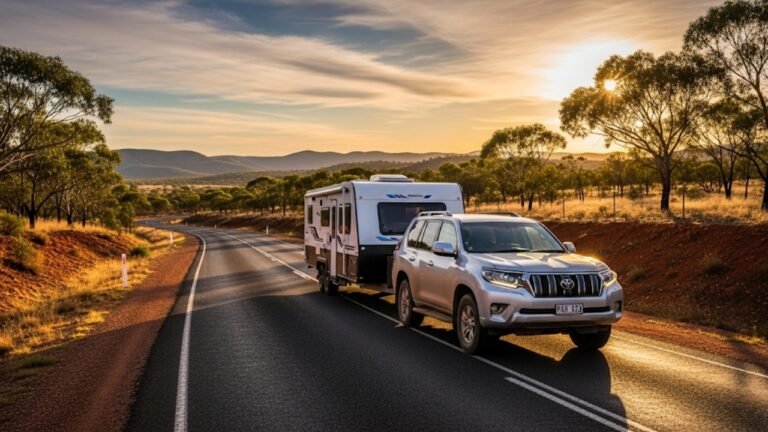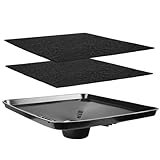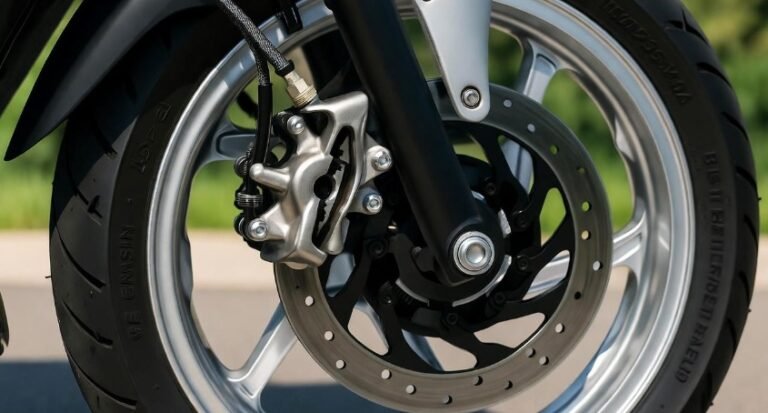How to Buy a Loaner Car from Dealership: A Complete Guide to Smart Savings and Smooth Deals

If you’ve ever walked into a car dealership and noticed shiny vehicles parked with a little “loaner” tag, you might have wondered — can you actually buy those? The answer is yes! Buying a loaner car from a dealership can be a clever move if you’re hunting for a nearly new vehicle without paying full sticker price. Think of it as finding a luxury hotel suite at a discount — gently used, perfectly maintained, and still carrying that new-car feel.
These loaner cars are typically used by dealerships as courtesy vehicles for customers getting their cars serviced. They usually have low mileage, complete service records, and often remain under the manufacturer’s warranty. But before you rush to grab one, there are a few key things you need to understand. In this guide, we’ll break down everything — from researching and evaluating options to negotiating and finalizing your purchase — so you can make a confident and smart decision.
1. Understanding Loaner Cars: The Dealership’s Hidden Treasure
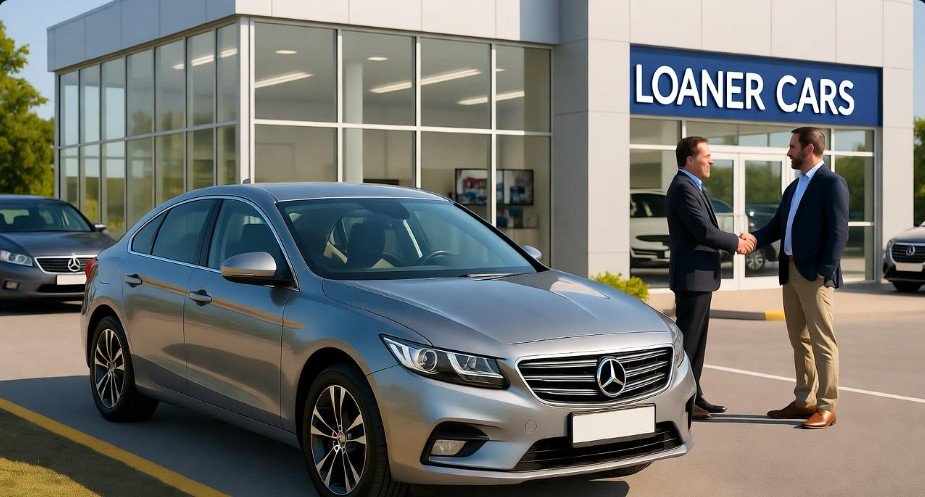
Buying a loaner car from a dealership is like discovering a secret menu item that’s both delicious and affordable. These cars blend the benefits of new and used vehicles, making them a favorite among savvy buyers. To get the most out of your purchase, you first need to understand what loaner cars are, how they’re used, and why they can be an excellent choice.
Loaner cars are often showcase vehicles that dealerships lend to customers when their own cars are in service. That means they’re driven gently, maintained regularly, and kept in pristine condition — because dealerships want to make a great impression. So when you buy one, you’re essentially getting a lightly used car that’s been pampered from day one.
Let’s look at some details to help you fully grasp what you’re getting into.
1.1 What Is a Loaner Car?
A loaner car, sometimes called a courtesy car or service loaner, is provided by dealerships to customers who need temporary transportation while their car is being repaired or serviced. These cars are not your average pre-owned vehicles — they are often recent models with modern tech features and low mileage.
Here’s what makes them unique:
-
Low Mileage: Most loaner cars have less than 10,000–15,000 miles.
-
Regular Maintenance: Dealerships inspect and service them frequently to ensure reliability.
-
New-Car Feel: They often have the same trims and features you’d find in a new model.
-
Under Warranty: Since they’re newer, most still have remaining manufacturer warranties.
So essentially, you’re buying a car that’s already broken in but still has that new-car smell — minus the high price tag.
1.2 Why Choose a Loaner Car?
Now you might be wondering, why should I buy a loaner car instead of a new or used one? The answer lies in a perfect mix of value, reliability, and savings. Below are some compelling reasons why this choice makes financial sense.
1.2.1 Cost Savings
One of the biggest attractions of buying a loaner car is the discounted price. Since these vehicles are technically “used,” even if lightly, dealerships often reduce their prices significantly compared to brand-new models. It’s like buying a designer outfit from a boutique at the end of the season — you still get the quality but at a much better rate.
1.2.2 Warranty Protection
Most loaner cars are still covered under the original factory warranty, or they come with extended warranties directly from the dealership. This gives you the peace of mind that any mechanical issue that pops up can be handled without unexpected costs.
1.2.3 Upgraded Features for Less
Want the luxury package without the luxury price? Loaner cars often come with premium features — like heated seats, panoramic sunroofs, or advanced driver-assist systems — that you’d normally pay extra for. Dealerships use high-trim models as loaners to impress customers, and you get to enjoy those perks for a fraction of the price.
1.2.4 Impeccable Maintenance
Unlike many used cars, loaner vehicles receive routine inspections and maintenance by professional technicians. They’re kept spotless inside and out because dealerships want to showcase their brand quality. Essentially, it’s a used car that’s been treated like royalty.
Table: Comparing Loaner Cars vs. New and Used Cars
| Feature | Loaner Car | New Car | Used Car |
|---|---|---|---|
| Price | Lower than new | Highest | Lowest |
| Mileage | Low (under 15,000) | Zero | Varies widely |
| Warranty | Usually covered | Fully covered | May not be |
| Condition | Like-new | Brand new | Depends on usage |
| Features | High trims, modern tech | Customizable | Depends on model |
| Maintenance | Regularly serviced | Perfect | Uncertain |
When you look at the balance of price, warranty, and quality, it’s easy to see why buying a loaner car hits the sweet spot.
2. Researching Loaner Cars: Your Blueprint for a Smart Purchase
Before signing any papers, it’s important to do your homework. Researching loaner cars from dealerships helps you uncover the best deals and avoid any hidden issues. Think of this phase as your treasure hunt — you want to make sure the car you’re eyeing is both a great find and a reliable investment.
Proper research means checking where to buy, investigating the car’s history, and verifying its condition before you make an offer.
2.1 Finding Dealerships That Sell Loaner Cars
Not every dealership openly advertises their loaner car sales, but many have them available. The key is knowing where to look and how to ask. Here are a few tried-and-true methods:
-
Search Online: Use phrases like “loaner cars for sale near me” or “certified dealership loaner vehicles.” Many dealerships list them under “Certified Pre-Owned” or “Courtesy Vehicle” sections.
-
Visit Dealership Websites: Some have dedicated pages for loaner cars, showcasing models, mileage, and special financing offers.
-
Call or Email Directly: Sometimes the best deals aren’t listed online. Contact dealerships and ask if they have any loaner cars available for purchase.
-
Check Local Auto Forums: Car enthusiasts often share insider info on dealerships offering the best deals on loaner cars.
Pro Tip: Focus on certified dealerships rather than third-party sellers. You’ll have better assurance that the car’s maintenance and records are legitimate.
2.2 Researching the Car’s History
Before you fall in love with that shiny sedan or sporty SUV, dig into its history report. This step is crucial — it’s like reading the biography of the car before you decide to make it part of your life.
Here’s what to do:
-
Ask for the VIN (Vehicle Identification Number): Every car has one, and it allows you to trace its history.
-
Run a Vehicle History Report: Use trusted services like Carfax or AutoCheck to see details about previous usage, any accidents, and title history.
-
Request Maintenance Records: Most dealerships maintain detailed service logs for loaner vehicles. Reviewing these can tell you how well the car was cared for.
-
Check for Recalls: Look up the VIN on the NHTSA (National Highway Traffic Safety Administration) website to see if there are any open recalls.
A clean history and consistent service record mean the car has likely been handled with care — a green flag for buyers.
2.3 Evaluating the Car’s Current Condition
Even if the car looks perfect on the lot, take time to inspect it closely. Just like trying on a pair of shoes before buying, a test drive can reveal details that aren’t visible at first glance.
Here’s your step-by-step checklist:
-
Exterior Inspection: Look for scratches, dents, or uneven paint. Minor wear is fine, but major damage could indicate a previous accident.
-
Interior Check: Ensure the seats, upholstery, and electronics (like the infotainment system and A/C) are working properly.
-
Test Drive: Drive it in different conditions — city streets, highways, and turns. Listen for odd noises and observe how smoothly it accelerates and brakes.
-
Professional Inspection: If possible, have a trusted mechanic check the car before finalizing the deal.
Remember, loaner cars are meant to impress customers, so they’re usually in excellent condition. But verifying for yourself adds an extra layer of confidence.
Quick Checklist: What to Confirm Before Buying
✅ Confirm remaining warranty coverage
✅ Verify mileage and history report
✅ Inspect interior and exterior condition
✅ Test drive in different road conditions
✅ Review dealership’s maintenance records
✅ Negotiate based on minor wear or mileage
Doing this ensures you’re getting value for every dollar — and not just buying based on appearance.
3. Negotiating and Buying the Loaner Car
Now comes the exciting part — actually buying the loaner car from the dealership. But before you sign those papers, it’s crucial to approach this step strategically. Negotiation isn’t just about lowering the price; it’s about maximizing value and ensuring all details are in your favor.
Buying a car — even a loaner — is both emotional and practical. It’s okay to fall in love with a vehicle, but don’t let emotions overshadow logic. Here’s how you can strike the perfect balance.
3.1 Negotiating the Price Like a Pro
Many buyers assume dealership prices are fixed, but that’s rarely true. You can — and should — negotiate the price of a loaner car. Here’s how to do it effectively:
-
Research Market Value: Use tools like Kelley Blue Book or Edmunds to see what similar models are selling for.
-
Leverage Mileage: Since the car has been used, you have room to negotiate based on mileage and wear.
-
Ask About Incentives: Dealerships sometimes offer special discounts or extended warranties to clear loaner stock.
-
Be Ready to Walk Away: If you sense pressure or unfair pricing, politely leave. Often, they’ll call you back with a better offer.
Example: If a brand-new sedan costs $32,000 and a loaner with 7,000 miles is listed at $28,500, you can reasonably negotiate it down to $27,000 or ask for added perks like free servicing.
3.2 Exploring Financing Options That Fit Your Budget
Once you’ve agreed on a fair price, the next big decision is how to pay for your new ride. Buying a loaner car from a dealership can be financed in several ways — and understanding your options can save you thousands in interest over time. Many buyers overlook this part, but it’s where smart planning really pays off.
First, check your credit score. This number determines what interest rate you’ll qualify for. A higher score usually means lower interest rates, which can make your monthly payments easier to manage. If your score needs improvement, consider paying off small debts before applying for financing.
Next, compare lenders. Don’t settle for the dealership’s financing plan right away. Get quotes from multiple banks, credit unions, and online lenders. Use this table to compare quickly:
| Financing Option | Pros | Cons |
|---|---|---|
| Dealership Financing | Convenient and fast; may include incentives | Sometimes higher interest rates |
| Bank Loan | Trusted process and predictable terms | Can take longer approval time |
| Credit Union | Lower rates for members | Membership may be required |
| Online Lender | Quick applications and competitive rates | May lack personal support |
Lastly, calculate your total budget. Include not just the price of the car but taxes, registration, insurance, and any dealer fees. A general rule of thumb is to keep your car expenses below 15% of your monthly income. This helps ensure that your new investment won’t strain your finances.
Pro Tip: Sometimes dealerships offer special financing deals on loaner cars, especially toward the end of a quarter or year when they’re trying to clear inventory. Timing your purchase can make a big difference!
3.3 Completing the Purchase with Confidence
Once the negotiations and financing are settled, it’s time to seal the deal. But before you sign any paperwork, take a deep breath and double-check a few final details. Buying a car is exciting, but rushing can lead to overlooked mistakes.
Here’s your final checklist for completing the purchase:
-
Review the Purchase Agreement Carefully:
Ensure all details — price, warranty, and included features — are clearly listed. Watch for any surprise fees or add-ons, like paint protection or extended service plans, that you didn’t agree to. -
Schedule a Final Inspection:
Ask for one last inspection before signing. Make sure any promised repairs or cleaning have been completed and verify the odometer reading matches what you were told. -
Confirm Warranty Coverage:
Clarify what’s included in the remaining manufacturer’s warranty. Some dealerships even extend coverage for loaner cars, so it’s worth confirming in writing. -
Set Up Insurance:
Before driving off, call your insurance provider to add your new car to your policy. Dealerships usually require proof of insurance before finalizing the sale. -
Sign and Get Copies:
Once everything checks out, sign the necessary documents and keep copies of every paper — title, bill of sale, and warranty details — for your records.
Once the paperwork is complete and you’ve got the keys in hand, congratulations! You’re officially the proud owner of a loaner-to-owner vehicle — a smart, cost-effective, and stylish choice.
4. Benefits and Risks of Buying a Loaner Car
Like any purchase, buying a loaner car from a dealership comes with both advantages and considerations. Understanding these can help you make a confident, balanced decision.
4.1 Benefits
-
Significant Savings: Loaner cars can cost 10–20% less than their brand-new equivalents.
-
Low Mileage: Most have fewer than 10,000 miles, giving you a near-new experience.
-
Warranty Coverage: Typically, they remain under the manufacturer’s original warranty.
-
Well-Maintained: Dealerships service these cars regularly to maintain brand image.
-
Modern Features: You often get the latest technology and luxury trims without paying top dollar.
4.2 Risks
-
Limited Inventory: Availability depends on dealership rotation and current stock.
-
Slight Wear: Even light use can mean minor scratches or interior wear.
-
Shorter Warranty Period: Depending on mileage and age, warranty coverage may have partially expired.
-
No Customization: Unlike a new car, you can’t pick color or features — what’s available is what you get.
Verdict: If you value savings and reliability over complete customization, a loaner car is one of the smartest investments you can make.
5. Expert Tips to Make a Smart Loaner Car Purchase
Buying a loaner car is part research, part strategy. These expert insights will help you make the most of your purchase and avoid common mistakes.
5.1 Time Your Purchase Strategically
Dealerships often rotate their loaner fleets every few months or after reaching a certain mileage limit. The best time to buy? End of the model year or quarter. Dealers want to make room for new arrivals, which means better prices and incentives.
5.2 Check for Certified Pre-Owned (CPO) Status
Many loaner cars are sold as CPO vehicles, which means they’ve passed rigorous inspections and come with extended warranties. CPO cars are a middle ground between used and new — you’ll pay a little more but gain peace of mind.
5.3 Ask About Maintenance Perks
Some dealerships include free maintenance plans for a limited time when you buy a loaner. This could cover oil changes, tire rotations, and basic inspections. Always ask — even a small perk adds long-term value.
5.4 Verify the Original In-Service Date
This date marks when the vehicle’s warranty officially began, not when you buy it. For example, if the warranty is three years and the car was first used a year ago, you’ll have two years remaining. Knowing this helps you plan for potential future repairs.
5.5 Don’t Skip the Test Drive
Even if it’s nearly new, a test drive reveals how the car feels on the road. Listen for any rattles, check steering responsiveness, and test all tech features. Trust your instincts — comfort and confidence matter.
6. Common Mistakes to Avoid When Buying a Loaner Car
While the process sounds simple, many buyers make avoidable errors. Here are a few mistakes you should sidestep to ensure a smooth experience:
-
Skipping the History Report: Never assume all loaner cars are spotless. Always verify the car’s background.
-
Ignoring the Fine Print: Some dealerships include non-refundable fees or conditions — read everything carefully.
-
Focusing Only on Price: A low price might hide other issues, like limited warranty coverage or missing features.
-
Not Comparing Offers: Different dealerships have different pricing structures. A little comparison can save hundreds.
-
Forgetting About Depreciation: While loaner cars are cheaper, consider resale value if you plan to sell later.
A cautious approach prevents regrets and keeps your investment secure.
7. Frequently Asked Questions (FAQs)
1. What exactly is a loaner car?
A loaner car is a vehicle used by a dealership as a courtesy car for customers whose vehicles are being serviced. They’re typically newer models with low mileage and excellent maintenance records, later sold at discounted prices.
2. Is buying a loaner car worth it?
Yes! It’s an excellent choice if you want a near-new car at a lower price. You’ll enjoy the latest features, warranty coverage, and dealership reliability without paying full market value.
3. Do loaner cars come with a warranty?
Most loaner cars still fall under the manufacturer’s original warranty, and some even include extended coverage from the dealership. Always confirm the exact duration before buying.
4. Can I negotiate the price of a loaner car?
Absolutely. Dealerships are often open to negotiation, especially if the car has been on their loaner fleet for a while or has minor wear. Use market data and comparable listings to support your offer.
5. Are loaner cars better than used cars?
In many ways, yes. Loaner cars usually have lower mileage, better maintenance, and more updated features than standard used cars. They strike a perfect balance between cost and quality.
6. Do dealerships offer financing for loaner cars?
Yes, dealerships typically provide financing options for loaner car purchases — sometimes with special interest rates or promotions. However, always compare with external lenders to get the best deal.
7. Can I get a trade-in deal when buying a loaner car?
Most dealerships allow you to trade in your old car toward the purchase of a loaner vehicle. This can reduce your total cost and simplify the buying process.
8. Are loaner cars part of certified pre-owned programs?
Often, yes. Many loaner cars qualify as Certified Pre-Owned (CPO) vehicles, meaning they’ve passed detailed inspections and come with additional warranties.
Conclusion
Buying a loaner car from a dealership is one of the best-kept secrets in the automotive world. It gives you access to a vehicle that’s practically new — packed with the latest features, covered by warranty, and impeccably maintained — all at a price that’s much easier on your wallet.
It’s the perfect blend of value and reliability, especially for buyers who want peace of mind without overspending. But remember: do your research, verify the car’s history, negotiate smartly, and never skip the test drive. Treat the process like a friendly game of chess — each move matters, and patience wins.
At the end of the day, when you drive your loaner-turned-owner vehicle off the lot, you’re not just buying a car — you’re making a smart financial decision that rewards you every mile down the road.

